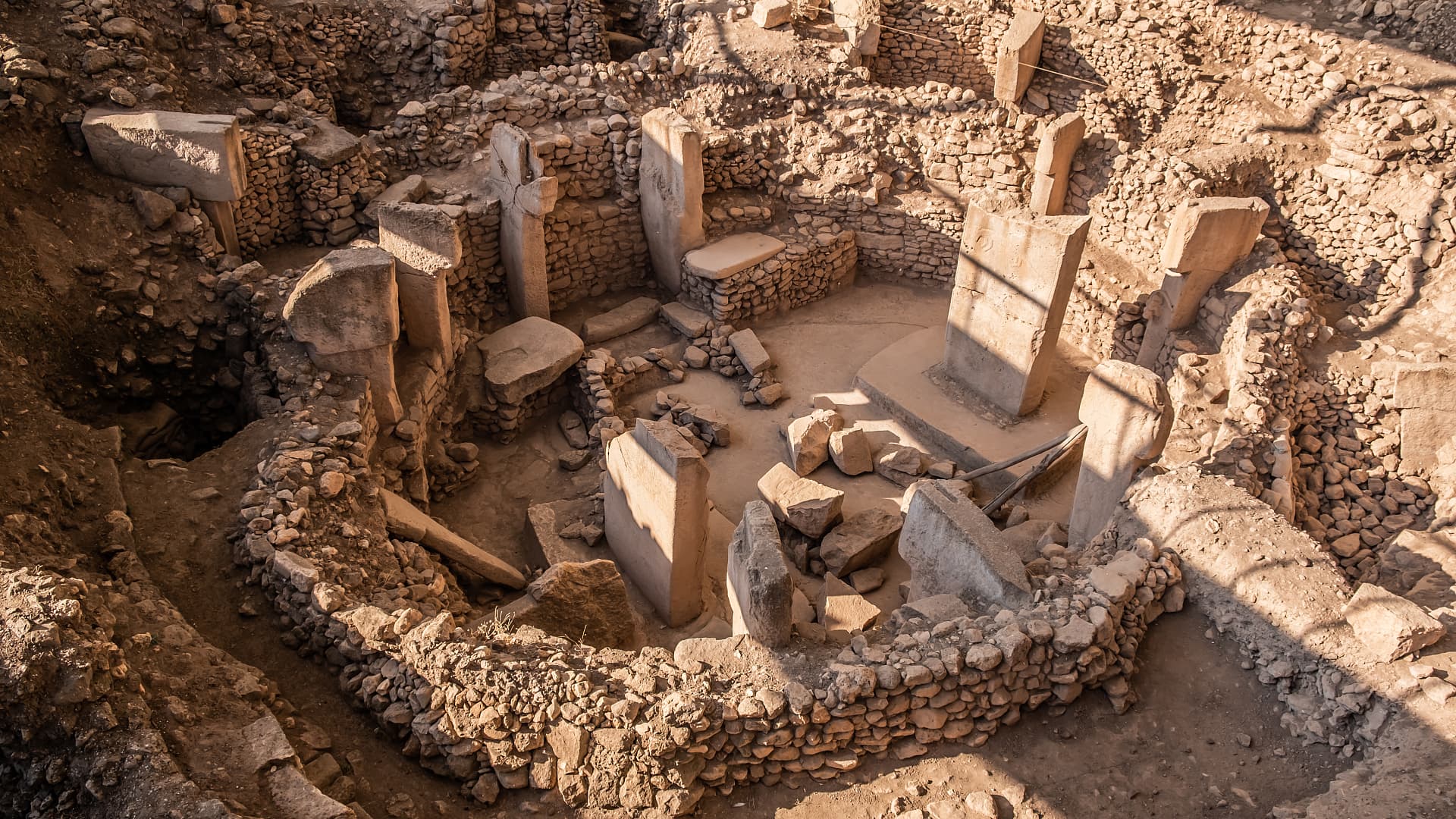So far, researchers have found plant remains, and they usually classify the finds as “environmental facts” – things that are natural, more or less accidentally created. The seeds, pollen and burnt wood were mainly used to rebuild the vegetation cover in the area. That has now changed. Leftover food provides information about activities that require manual skills, specific skills, and intentional actions. “The discovery of prepared food should be understood first and foremost as an artifact, and secondly as an identified plant species,” Fuller says. “Hot, fermented, soaked – the activity of food preparation can be compared to pottery.”
As archaeologists work more and more closely with researchers from neighboring disciplines, more and more startling similarities open up across times and cultures. In Baden-Württemberg and Switzerland, for example, excavators have discovered unusual fire remains at Neolithic sites over 5,000 years old. At first glance, it looked as if the contents of a large earthen pot had been heated until the liquid evaporated and the organic matter in it ignited. At first, prospectors suspected that the charred husks came from grain storage jars that had been destroyed in a fire. But in a scanning electron microscope, it was observed that the cell walls of the individual granules were unusually thin. Looks like something else has happened here.
Heiss and Valamoti compared the leftovers with those from ancient Egyptian breweries, which belonged to about the same time. Their conclusion: Thin cell walls were created by germination or fermentation, an important stage in the fermentation process. The first farmers in the Alpine region brewed beer. “We came to a very different conclusion than was initially assumed,” Hess says.
Telltale bubbles in bread
The art of bread making seems to go far beyond the craft of fermentation. Aranz-Otaygui was conducting research at a 14,500-year-old site in Jordan when she was picking up burnt bits of “potential food” from the stoves of earlier hunter-gatherer cultures. The black remains were placed in a scanning electron microscope and photographs of them were shown to archaeologist Lara Gonzalez Carretero of the Museum of Archeology in London. Gonzalez Carretero works in the Neolithic settlement of Çatalhoyuk in Turkey, searching for traces of bread bakers. The researchers were amazed when they saw the charred fragments of Jordan swell: Discover the bubbles that characterize the bread.
Most archaeologists assume that bread did not appear in the human diet until the Neolithic Revolution. Cereal farming and agriculture established themselves 5,000 years after bread crumbs fell into the stoves of hunters and gatherers. It appears that the early bakers of Jordan processed wild wheat.
This discovery could explain why the Neolithic revolution happened in the first place. It has occurred all over the world, independently of each other, many times and at different times. Before agriculture existed, bread was probably a luxury product. It took a lot of time and effort to collect enough wild grains. Perhaps the effort was a reason to speed up “making a living”. Arranz-Otaegui is convinced that the need for bread – at least in the Middle East – led to the domestication of wheat. Because they were looking for a way that they could always bake enough bread. “What we discovered in Jordan also changes our picture of the big picture,” explains Aranz-Otegi. “One of the most important questions in archeology is: What made the transition to agriculture? Now we see that hunters and gatherers used the grain.”
 Laden…
Laden…© Alexis Pantos (Details)
old stove | Researchers discovered the remains of burnt bread in this fireplace at the Shubaiqa 1 site in Jordan. Charred pastries are older than the oldest evidence of cultivation.
The next item on the archaeological botanists’ list is the prehistoric salad buffet – also a neglected area of earlier diets. Researchers are currently working on ways to detect traces of raw vegetables. Uncooked greens are less conspicuous in the archaeological research spectrum than seeds and hot grains. Lucy Kubiak Martens calls it the missing link in the search for prehistoric eating habits. “There is no way to use charred leftovers to prove that humans once ate green lettuce.” But there is at least one species that is likely to be beneficial: “You would be surprised if you knew how many green vegetables can be found in human coprolites,” says Kubiak-Martens. We are talking about fossilized or preserved stool. The Dutch researcher was awarded a grant in 2019 to study 6,300-year-old coprolites that survived in wetland areas of the Netherlands. The world hopes that the secretions will reveal what early farmers in Europe did.
Old meals cooked again
Some researchers are doing their best to uncover prehistoric eating habits. As in the case of Göbekli Tepe. Hardly any organic residue showed up in there – so it was very little to rebuild the vegan diet at the time. That’s why Laura Dietrich approached the problem differently. Instead of cooking dishes at the time, she took the traditional kitchen utensils and reproduced them.
In her experimental kitchen in Berlin, Dietrich demonstrates her process, which not only takes a lot of time, but also requires a lot of physical effort. I made a hand grated stone the size of a bread roll out of black basalt. Dietrich depicts the piece from 144 different angles. Then grind the flour. For eight hours they grind four kilograms of einkorn with basalt. Then Dietrich photographed the Stone, also known as the Runner, again. You load the images into a program that uses them to create two 3D models. Their conclusion: fine grinding of flour, which is useful for baking bread, leaves different marks on the surface of the stone than if the grains were roughly ground, for example, for cooking porridge or preparing beer.
Beer from Göbekli Tepe – ‘A little bit bitter, but drinkable when you’re thirsty and live in the Neolithic’(Laura Dietrich, archaeologist, German Archaeological Institute in Berlin)
Now that the archaeologist had thousands of rubstones in her hand, she could often feel what they were used for just by touching them. “I touch the stones to feel signs of wear,” she says. “Fingers can feel changes at the nano level.” Dietrich compared the signs of use on her copies to those on the runners in the Göbekli Tepe rock garden. I discovered that the samples there are rarely used to grind fine bread flour. Often people almost grind grain, As described by Dietrich in a 2020 study. Just enough to break off the hard outer shell, the bran. This made it easy to cook the grains into porridge or brew them into beer.
The researcher wanted to test her hypothesis. I commissioned a builder to recreate a stone basin from Göbekli Tepe with a capacity of 30 liters. Along with her team, Dietrich cooked porridge with her in 2019 by placing hot stones in the container. In the bowl, she also fermented Neolithic beer from hand-grown grain, that is, from barley. The result was “a bit bitter, but drinkable,” says Dietrich, “if you’re thirsty and live in the Neolithic.”
Lots of grain in Gobekli Tepe
What was happening in Göbekli Tepe 12,000 years ago? Apparently something archaeologists suspected much later. Scrub stones and basins show that the builders of the site were very familiar with wild grains and knew how to prepare them. Basically, they were early farmers even though they had no domesticated crops. “These are the best scrub stones ever—and I’ve seen a lot of friction stones,” Dietrich says. The people in Göbekli Tepe knew what they were doing and how to deal with the grain. They are past the experimental stage.”
Dietrich’s experiments changed Gobekli Tepe’s interpretation. Previously, most archaeologists assumed that many hunters would meet on the hill at festive times, eat roasted antelopes and drink lukewarm beer by the barrel. “No one thought about the possibility that plant foods would be so widely consumed here,” Dietrich says.
In the study of the year 2020 She explains that the “barbecue and beer” scenario does not apply to Göbekli Tepe at all. The numerous implements of grain processing show that grain was a staple food there even before the transition to arable agriculture—and not just in fermented form as an occasional luxury food.

“Alcohol buff. Troublemaker. Introvert. Student. Social media lover. Web ninja. Bacon fan. Reader.”







More Stories
Simple recipe: sweet cream cheese slices from the tray
This is how our brain chooses what information it will remember in the long term
Up to 100 pilot whales stranded in Western Australia – Science